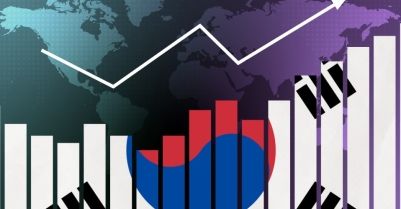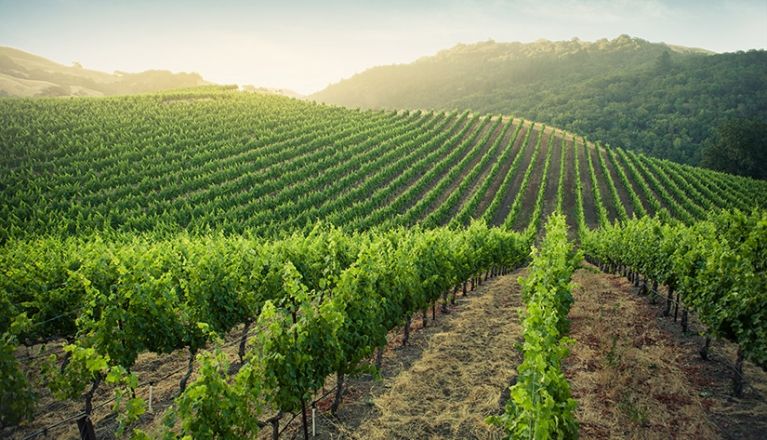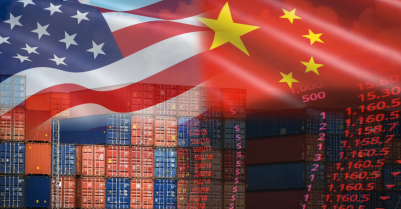-
View article
 #Economy
#EconomySouth Korea: a year after the political crisis, markets are buying the promise of stability
2025/12/17
- #Eco-trends
- 2020/04/28
- 0
-
8
Innovation, from the vineyard to the glass
From the vineyard to the glass, the wine-growing and winemaking industry has been no stranger to the technological revolution affecting more and more aspects of our daily lives. Given that France is the world’s number one exporter of wine by value and ranks third in the world by total area of vineyards, with 793,000 hectares, this is a necessity. In the space of just a few years, hundreds of start-ups and businesses have created new solutions: process automation, smart sensors, artificial intelligence, new marketing models, and so on.

France’s WineTech sector is taking shape
At February’s Wine Paris exhibition, 35 WineTech start-ups announced that they were joining forces to promote innovation in the wine sector. Their goal? To win over new investors and power up the growth of fledgling businesses in an increasingly competitive global market.
This appears to be a salutary initiative: despite the size of the sector in France, the players that have raised the most financing are foreign. Examples include Vivino (Denmark), whose solution scans a bottle’s label and serves up associated reviews, and which has raised $56 million, and Coravin (United States), whose system makes it possible to pour a glass of wine without uncorking the bottle, and which has raised $64.3 million.
Innovation in the service of wine-growing
First of all, innovation irrigates wine-growing, whose cultivation practices are evolving to meet the challenge of reducing inputs for a crop that remains sensitive to the vagaries of the weather. A number of fledgling companies are operating in this segment with the aim of helping wine-growers with their day-to-day work.
There are many robotic solutions for use in agriculture. For example, Naïo Technologies (a start-up hosted at Village by CA Normandie) has created Ted, an autonomous weeding robot for vineyards that offers an alternative to traditional herbicides.
Meanwhile, Vitibot has designed an all-electric high-clearance robot (with ten hours’ battery life) that can till the soil and treat vines: several such robots are already in use in the Champagne region. Although less visible among the vines, decision support tools also provide wine-growers with valuable help in formulating their strategies for protecting vines against certain specific diseases. An example is Vintel® by ITK.
Meanwhile, smart weather stations and associated sensors (monitoring wetness, air temperature and hygrometry) provide an effective way to determine when action is needed to protect crops against mildew or frost. Lastly, airborne solution Scanopy offers a drone-based vineyard mapping service that helps owners manage operations on the ground: the images gathered are analysed to build a 3D model of the vineyard and produce agronomic indicators (leaf area, vine health, etc.).
New distribution channels
Further downstream, the traditional distribution channels of wine merchants and supermarkets are also being shaken up by innovation in the form of e-commerce, wine box subscriptions, wine marketplaces, and so on. The underlying idea is to harness digital technology to reinvent the purchase experience and streamline the value chain.
For example, Caviste Authentique (formerly hosted by Village by CA) offers an online portal that brings together independent wine merchants who ship direct to consumers from their own stock. The underlying idea is to provide access to wines rigorously selected by merchants but with a wider range than a single merchant would be able to provide. Meanwhile, Le Petit Ballon reimagines the purchase experience by guiding consumers in their choices using a taste-based classification system and a recommendation algorithm, with bottles sent out to subscribers in a box. Meanwhile, innovative firm TWIL, short for “The Wine I Love”, runs a platform that cuts out the middlemen, enabling consumers to buy directly from producers.
Furthermore, with the COVID-19 crisis shutting down all restaurants, cafés and bars and directly affecting wine exports, online retail offers a way to maintain contact with consumers. For example, Les Grappes opted to broaden out its April spring wine fair to support wine-growers and help them sell wines that would otherwise be doomed to stay on the estate.
Innovation in the service of consumers
Lastly, numerous start-ups are gearing up to help consumers choose wine and master the ins and outs of wine tasting.
WineAdvisor is a French app that offers label scanning and cellar management functions. Once a label has been recognised, the app offers up the wine’s technical data and recommended food pairings. On a different note but still in the service of consumers, MyBacchus (Village by CA Atlantique Vendée) offers Bacchus One, a connected object that helps users monitor wine conservation by specifying optimum storage (light, temperature, etc.) and tasting conditions.
We can see, then, that there is no shortage of innovative solutions to help wine-growers and winemakers. However, they are still struggling to carve out a space in a sector with a reputation for hewing to tradition.
Arnaud Rey - arnaud.rey@credit-agricole-sa.fr








